There's no denying that dogs love treats. Our furry friends want a tasty snack whenever they sit, walk, or even bark. And why not? The treats are delicious! But sometimes, it can lead your dog to prefer treats over a proper diet. So what can you do if your dog won't eat his food but will eat his treats?
When a dog doesn't eat their food, it's very concerning and can signify something serious. The first thing to do is determine the cause of your dog's appetite loss. You can do many things to encourage your dog to eat once you know the source of the issue. Here are some things you can do to get your dog to eat!
What Does It Mean If My Dog Won't Eat His Food?
Why is my dog not eating his food but will eat treats? It's never good if your dog isn't eating its food. A dog that's not eating may have an underlying medical condition. It can also cause further complications and health concerns if dental issues are left untreated. A dog may also lose their appetite due to behavioral or situational reasons, including from food allergies or changes to its routine or environment. Some dogs will also refuse to eat certain dog food. The food may be expired and stale. They may also prefer other foods after a while, my dog won't eat his food but will eat human food.
Is It Common For Dogs Not to Eat Their Food?
It is not common for dogs to avoid eating. Dogs are very food motivated, and you've probably noticed that your dog will do almost anything for a treat. And whenever you go into the kitchen, your dog thinks they're going to get either a bite of the food you're preparing or a bit more kibble in their bowl. If your dog is not eating, it's most likely the sign of other health issues you should be aware of. Here are some common reasons your dog is refusing to eat their dog food:
- Dental disease or pain in their mouth: If your dog has loose or rotting teeth, eating kibble can hurt them.
- Upset stomach: If your dog is vomiting or has diarrhea, they may have an ongoing upset stomach that's causing them too much discomfort.
- Serious health condition: Your dog may be too sluggish, sick, or uncomfortable to eat if they are a serious illness like liver disease, kidney disease, lung disease, or congenital heart failure.
- Stress: A change to your dog's environment might make them too anxious to eat. A new family member or the loss of a family member can also cause stress.
- Fear: Fireworks, a stranger visiting, a storm, and other sudden events may scare your dog. This can make your furry friend lose its appetite.
- Issues with food: The food itself may be the problem if it's stale, expired, or spoiled. While some dogs may eat just about anything, others are more particular.
- Your dog notices a pattern: Some dogs will realize that if they hold off eating their own food, there's a chance you will give them "human" food or other food that they consider more desirable than their kibble.

Will Dogs Starve Themselves If They Don't Like Their Food?
No, dogs will not suddenly stop eating and decide to starve themselves if they do not like their food. However, dogs can be picky eaters and rather selective regarding certain foods. They might refuse to eat, but they will never purposely starve themselves. To do so would go against their innate survival instincts.
Your dog might go as long as 24-48 hours without eating. But hunger will eventually set in, and they will start eating food again. But what if your dog still doesn't eat food after this time? It's not a picky dog going on a hunger strike when this happens. It's most likely a sign of an underlying medical condition, and you should take your dog to the vet immediately.
How Long Will A Picky Dog Go Without Eating?
Your dog can go anywhere from one to five days without food, sometimes seven days in very rare cases. However, it's not normal for a dog to stop eating regular food only for several days. If your dog doesn't eat its normal food or new food, then it's time to take them to the vet. Don't wait too long to seek veterinary advice.
A healthy dog will never starve itself. You should take your dog to the veterinarian if they don't eat for over two days.
Is It Bad If My Dog Won't Eat His Food But Will Eat His Treats?
Yes, it is unhealthy for a dog to ignore its main course and head straight for snacks. Sometimes, your pup will hold off eating dog food because it notices you respond by giving them treats or human food if they don't eat. While you may be doing this in a panic, it's encouraging the dog's behavior.
Dog treats do not contain the essential nutrients and ingredients dogs need to be healthy and active. They often don't have as much protein and contain more carbohydrates and other ingredients not supposed to be eaten by your dog. Too many treats will make your dog overweight and unhealthy.
High-quality dog food is formulated to provide your dog with a balanced, healthy diet. They must eat the required amount of dog food daily to thrive properly.

Why dog won't eat food but will eat treats
If your dog will only eat treats or dog not eating food but eating treats, this is most likely a learned behavior. Just like you'd rather your dog eat only a cupcake than a salad, dogs prefer junk food over their nutritious dinner. And if you are willing to treat your dog when they don't eat their food, you can give them Holistapet Wellness dog treats to keep avoiding their meal to get the reward.
The dog will eat treats but not food may also suffer from a medical condition. It's sometimes considered a form of anorexia. Call a veterinarian immediately and schedule a visit if your dog has not eaten its food for 24 hours (even if it is willing to eat treats).
Is My Dog A Picky Eater?
Several characteristics unique to your dog can determine if they are a picky eater or not. Thanks to their genetics, certain breeds are predisposed to eating more than other breeds.
Breeds with very hearty appetites include:
- Beagle
- Bull Terrier
- Dachshund
- Golden Retriever
- Great Pyrenees
- Labrador Retriever
- Norwegian Elkhound
- Pembroke Welsh Corgi
- Pug
- Rottweiler
If your dog isn't one of the breeds listed above, then chances are they might be a picky eater. Another determining factor and a strong indicator of whether or not your dog is a picky eater is how long it takes for your dog to finish their meal. Consider your dog a picky eater if they don't empty their bowl within 20 minutes.
A final sign that your dog may be a picky eater is if they refuse to eat regular dog food but eat other types of food, such as human food or table food. Regardless of your dog's pickiness, it's important to provide your dog with nutritious food and maintain a regular feeding schedule. Providing a routine for your dog's eating habits will make them accustomed to eating at certain times and prevent them from going hungry.

What Dog Breeds Are Picky Eaters?
Several dog breeds are genetically predisposed to be picky eaters. If you have a dog that won't eat their own food but will eat other food, chances are they are a picky eater and belong to a breed naturally inclined to this trait.
Dog breeds that are typically picky eaters include:
- Bichon Frise
- Boston Terrier
- Cavalier King Charles Spaniel
- Dachsund
- English Cocker Spaniel
- French Bulldog
- Greyhound
- Maltese
- Pekingese
- Poodle
- Pug
- West Highland White Terrier
Try CBD Treats
If you're going to give your dog the occasional treat, you want to be sure it's got plenty of wellness benefits. That's why we recommend CBD dog treats. CBD is a non-psychoactive phytocannabinoid found in the hemp plant that provides many advantages to pets and people. When it interacts with your dog's endocannabinoid system (ECS), it can reduce physical discomfort, upset stomachs, and it also helps to stimulate the appetite.
It also can calm your dog, helping them feel relaxed after a stressful situation (including a move or storm). If you believe your dog is eating too many treats, try giving them CBD for dogs. You can drop it directly into your dog's mouth, and once your dog is willing to eat, mix some oil into their meal.
Make Mealtime Fun
Try exciting your dog with some playtime before meals. This will make dinner fun and give them a bit of an appetite. Give your dog a walk in the morning before breakfast. You can also give your pup some dog food as a reward if they solve a puzzle or perform a trick. This will make eating a positive social experience.
Warm Up Wet Food
You can warm up your dog's wet food to make it more delicious. Using a microwave to heat wet dog food is perfectly safe and a fast way to prepare your dog's meal. Microwaving wet dog food enhances its smell. As a result, your dog will find the savory aroma enticing and become tempted to eat it. Don't worry if you don't have a microwave. You can easily warm up wet dog food in a pan.
Make sure this pan is separate from the one you normally use to cook your dry food. This will help prevent cross-contamination and allergic reactions in your dog.
Limit Treats
Your dog may be full of treats and human food. If they're packed all those treats, they may not be as likely to bother eating their dog food. They may also know that treats are just around the corner, giving them a reason to hold back and wait for the tastier option.
Create A Suitable Eating Environment
Where you feed your dog can affect whether they want to eat or not. Your dog's eating habits and environment are dependent on the type of dog you have. If you have a gregarious dog, they might prefer to eat in a place with plenty of people and pets. These dogs will dislike eating in quiet, isolated areas.
However, these calm places may be the ideal eating environment for nervous dogs. These dogs will want privacy and prefer to eat alone or with minimal people and pets around.

Play to your dog's personality and switch up where they usually eat. Changing the environment might go a long way to solving your dog's appetite issues. You might want to try the following feeding environments based on your dog's personality:
- Nervous/Lazy Dogs: Feed them in a quiet room or space in your house. See if they remain calm and start eating their meal. Be in the feeding room with your dog to help them feel calm and relaxed.
- Sociable/Active Dogs: Feed them when other people and pets are around. Try to incorporate activities during feeding to make them pay for their meal.
Take Your Dog to the Vet
If your dog refuses to eat their food for 24 hours or more, you need to take your pup to the vet. A vet can run some tests on your dog to determine blood diseases and the possible cause of their appetite loss. They can also provide advice, including new foods and treatment plans.
Should I Take My Dog's Food Away If He Doesn't Eat It?
You should take their food away if your dog doesn't eat within 20 minutes. A little bit of reverse psychology might be the trick to getting your dog to eat more food. Your dog will go without food for a few hours, maybe even a day or two, until they get hungry enough to eat. You might have to employ this technique a few times for your dog to get hungry.
Remember that dogs usually don't starve themselves of food and eventually start to eat. If your dog goes more than 48 hours without eating, you should take them to the veterinarian to get checked out for any issues they may have.
Final Thoughts - Dog Won't Eat His Food But Will Eat His Treats
If there's one thing you can count on, it's your dog wanting food anywhere, anytime. So, it can be pretty concerning when your dog stops eating food. When a dog refuses to eat, it most likely deals with something serious. It may be a medical concern or a behavioral issue. If your dog doesn't eat for 24 hours or more, take your dog to the vet to determine what's happening.
Sometimes, dogs may still want human food and treats. This could be from conditioning or due to a medical issue. Either way, treats don't provide the same nutrients as a healthy, balanced diet. Luckily, ways to encourage your dog to eat their meals include a feeding schedule, CBD, making mealtime fun, and limiting treats. With the right help, including a vet visit and natural home remedies, your dog will be eating again soon!

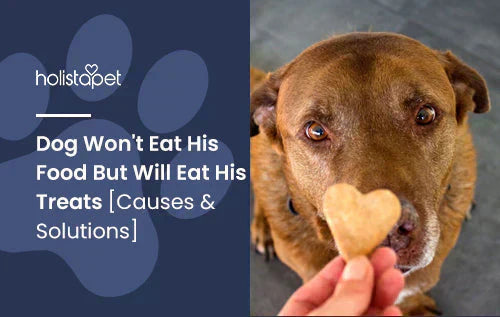
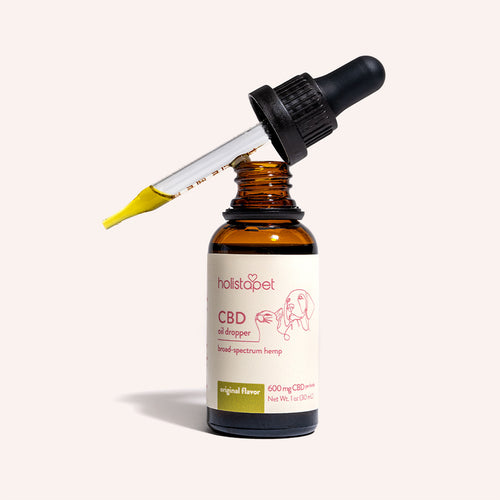 CBD Oil for Dogs - Fast Acting
CBD Oil for Dogs - Fast Acting
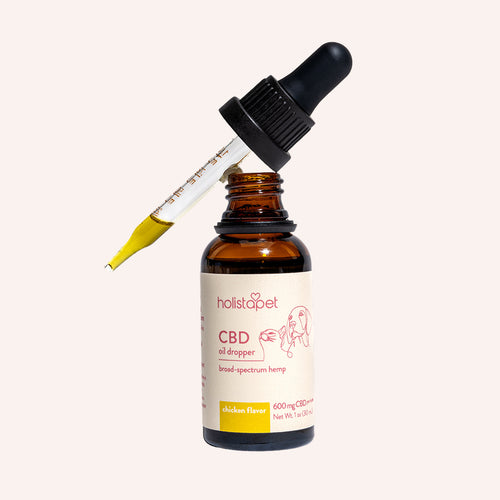 Chicken Flavored CBD Oil For Dogs - Easy Dose
Chicken Flavored CBD Oil For Dogs - Easy Dose
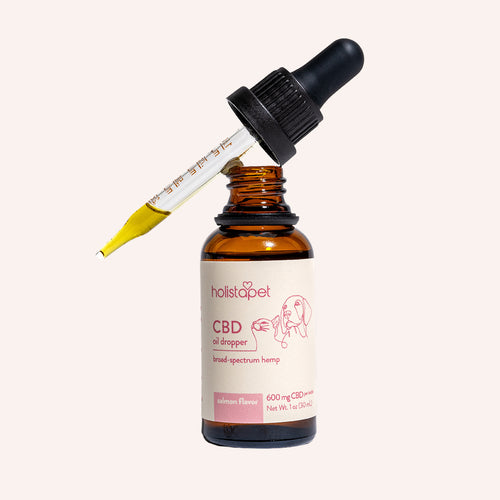 Salmon Flavored CBD Oil For Dogs - Highly Rated
Salmon Flavored CBD Oil For Dogs - Highly Rated
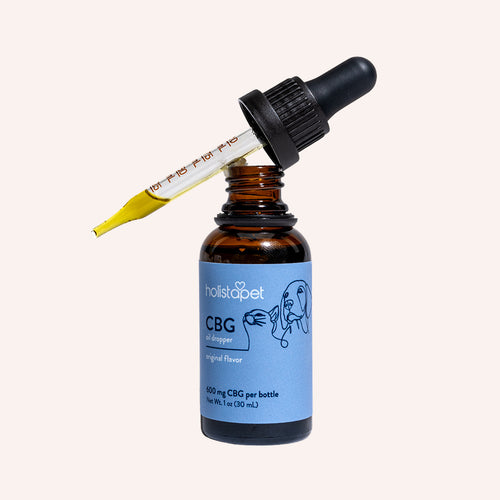 CBG Oil for Dogs and Cats - Loved by Thousands
CBG Oil for Dogs and Cats - Loved by Thousands


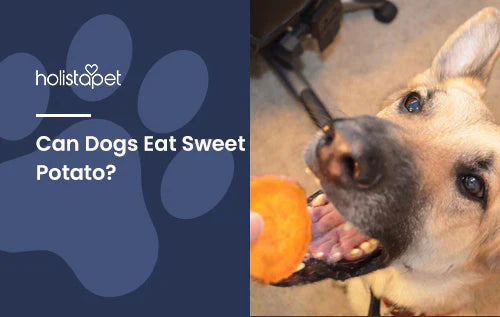
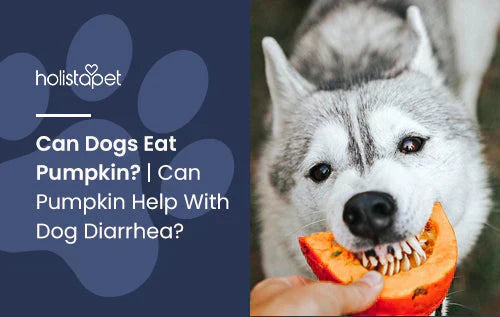

Leave a comment
All comments are moderated before being published.
This site is protected by hCaptcha and the hCaptcha Privacy Policy and Terms of Service apply.